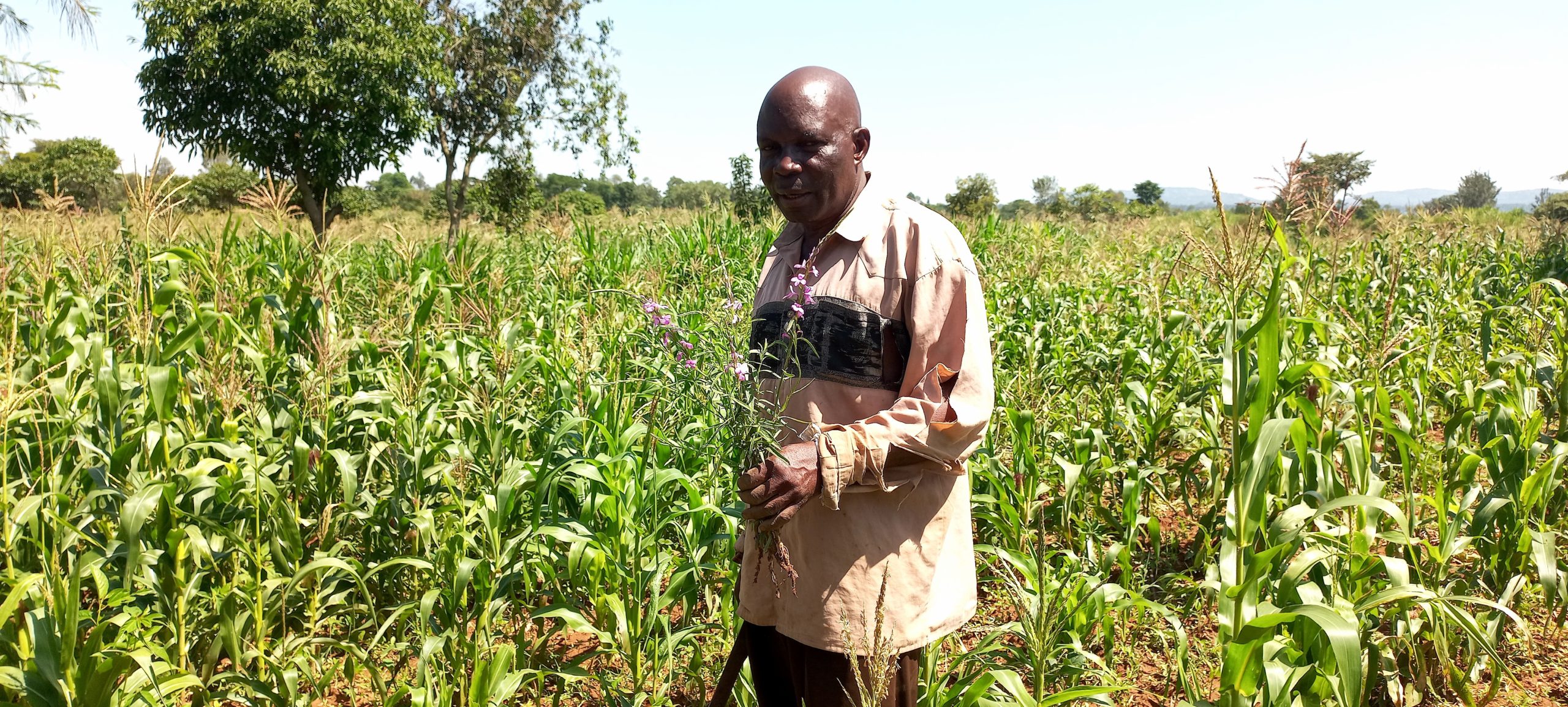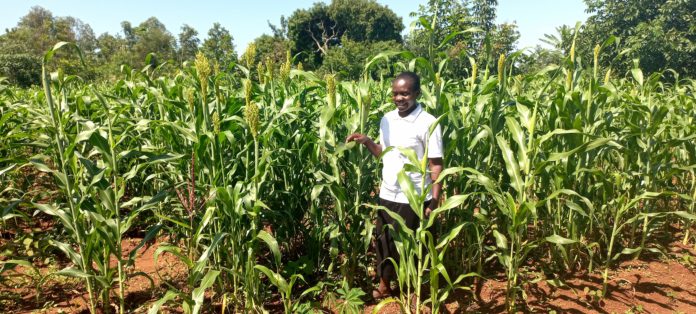BY OKONG’O ODUYA
Busia County, Kenya: Scientists and researchers have found out that Striga weed, commonly known as witchweed is affecting sorghum production in Kenya and most countries in Africa, India, and Asia.
According to them, the weed has devastated cereal crop production in the Western Kenya region estimating, that at least 300 million farmers in Africa have suffered total yield loss because of Striga weed.
Sorghum was first planted in Ethiopia 5,000 years ago and later on, it spread to India, China, and South Africa among other countries in Sub Sahara Africa. It is a multipurpose crop used as food, feed, and raw material for the brewing industry.
Farmers in Western Kenya for ages have been growing sorghum as food, but they are embracing the crop as a source of income. There are brewing companies using sorghum to brew alcohol, but the challenge is that the variety is not immune to parasites.

Eldana Mariam, a sorghum farmer from Ikondokhera village in Nambale Sub County Busia County. She tells testifies on how the weed has affected the crops on her farm for the last two years.
According to her, the weed surfaces after the second weeding.
She has tried all means available to eliminate it but in vain. She has gone to the point of buying a chemical known as Kichawi kill in an attempt to eradicate the weed but with little achievement.
With all the efforts in place, Ms. Eldana noted that she can only harvest a bag of sorghum from a one-acre piece of land.
She says the weed attacks the plant at the root place sucking all the nutrients leaving the plant with nothing and eventually it won’t produce anything or produces very little.
“I started farming white sorghum in 2018, we were 18 of us but along the way, a number of farmers opted out due to a number of challenges including invasion of Striga weed. This weed is a mess here. Once it invades your farm you will harvest nothing, it sucks nutrients from the plant leaving the plant to die and that has been our main problem here,” she said
She added, “There company called Toothpick, this came to us claiming that it offers solution over the weed it sells certain chemical known as Kichawi kill, we buy at ksh4800, but still there is little impact. After a certain period of time, it resurfaces again.”
According to her if there is a way they can get sorghum variety that will be resistant to the weed which is commonly known as ‘Khayongo’ will be relieved not just to her but a number of farmers in her region.
The same sentiments are shared by Joseph Mialo adding that the weed is a threat to their food security.
He is appealing for the researchers to speed up getting sorghum and maize varieties that will be immune to Striga weed to enable them to enjoy the fruits of their labor.
“If there is any research going on to find sorghum variety that is resistant to this weed, it is welcomed. We are really suffering. We invest heavily in sorghum farming but when it comes to the harvest, there is nothing to be proud of.” He noted
Mr. Alex Dunia is another distressed farmer in the same village. According to him the last two years, the piece of land he used to harvest at least 15 bags of maize and sorghum, he can only harvest 5 bags of maize and all is because of the weed.
“In one acre and a half piece of land I use manure during planting. Then after the second wedding, I top dress with CAN fertilizer with enough rain I could harvest 15 bags during a long season, and in the short planting season I get12 bags of maize but for the last two years after the invasion of the weed harvesting 5 bags is a task,” he noted
According to Professor Stephen Runo, a professor in Molecular biology at Kenyatta University’s department of chemistry, the weed has done more harm to Africa than colonization.
The weed is a parasite that attaches its roots to host crops, such as maize, sorghum, rice, and all the cereal crops. It sucks out nutrients from the host plant killing the plant. The worst part is even when it’s uprooted it keeps coming back. That is why it is referred to as worse than colonizers.
“A lot of farmers do not know how this. The parasite attaches itself to the root of the crop and sucks nutrients. It does not only steal the nutrients of the plant but also causes a loss in photosynthesis ability. The plant cannot make its own food and eventually, the plant dies. If there is infestation you will see the crop starts to wilt upon germination,” he said.
He says they are working on varieties of sorghum that are resistant to the parasitic plant Striga adding that the parasite contributes between 30 to 100 percent yield loss depending on the varieties the farmer has planted.
Runo says that some varieties are completely destroyed depending on the level of resistance to the parasite.
“I am interested in the variety of sorghum that is resistant to parasites. We are developing varieties of sorghum that are resistant to the parasitic plant Striga known as Khayongo by the locals here. This parasite caused 30 to100 percent yield losses depending on the level of infestation and the resistance of the variety being planted.”
“Some varieties would be completely destroyed by the parasite, hence farmers getting zero yields. Overall we estimate that the parasite caused 7 Billion dollars of yield losses to the most staple cereals in Kenya and other sub-Sahara Africa.” He explained.
Professor Runo noted for the last five years they have been working on Striga smart sorghum and they have sample farms where they have planted 16 sorghum varieties to determine the resistance capability of each variety to the Striga weed. After which they will settle on varietires necessary for government bodies’ approval.
“What we have done in the last five years is to look for a variety of sorghum that is resistant to the parasite. We went through all the databases and depository of sorghum from everywhere in the world and we got representative samples of sorghum that represent the global diversities. Then we took them through a lab screen to determine their Striga resistance potential. From the lab, we came up with a sub-set of variables that we call Striga smart sorghum. They are about 16 varieties and from the varieties, farmers will tell us what variety is resistant to the weed after the maturity,” Prof. Runo explained.














